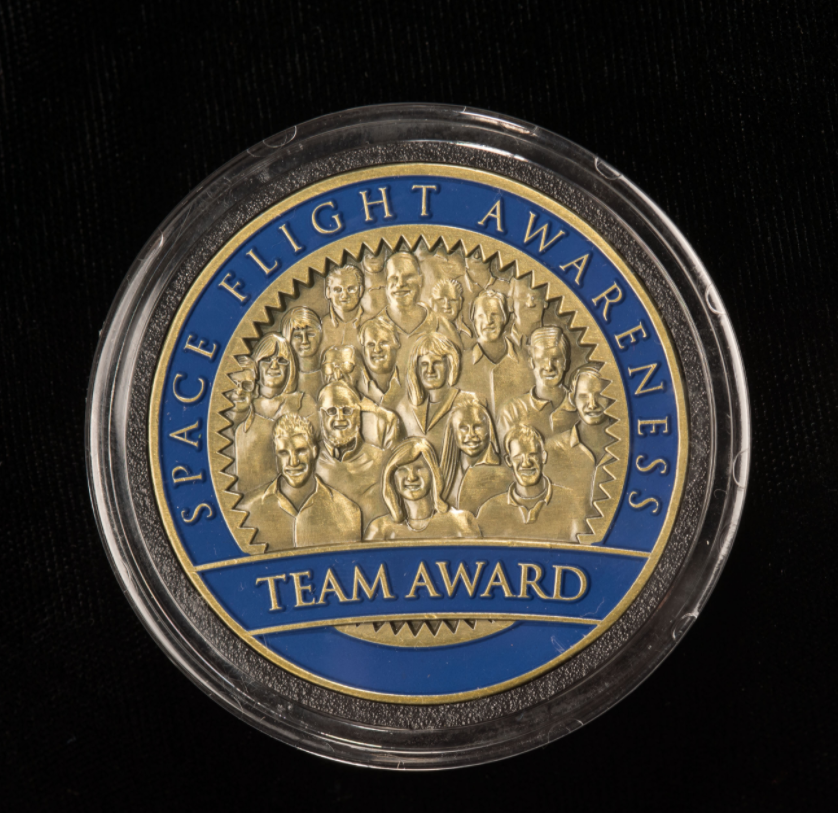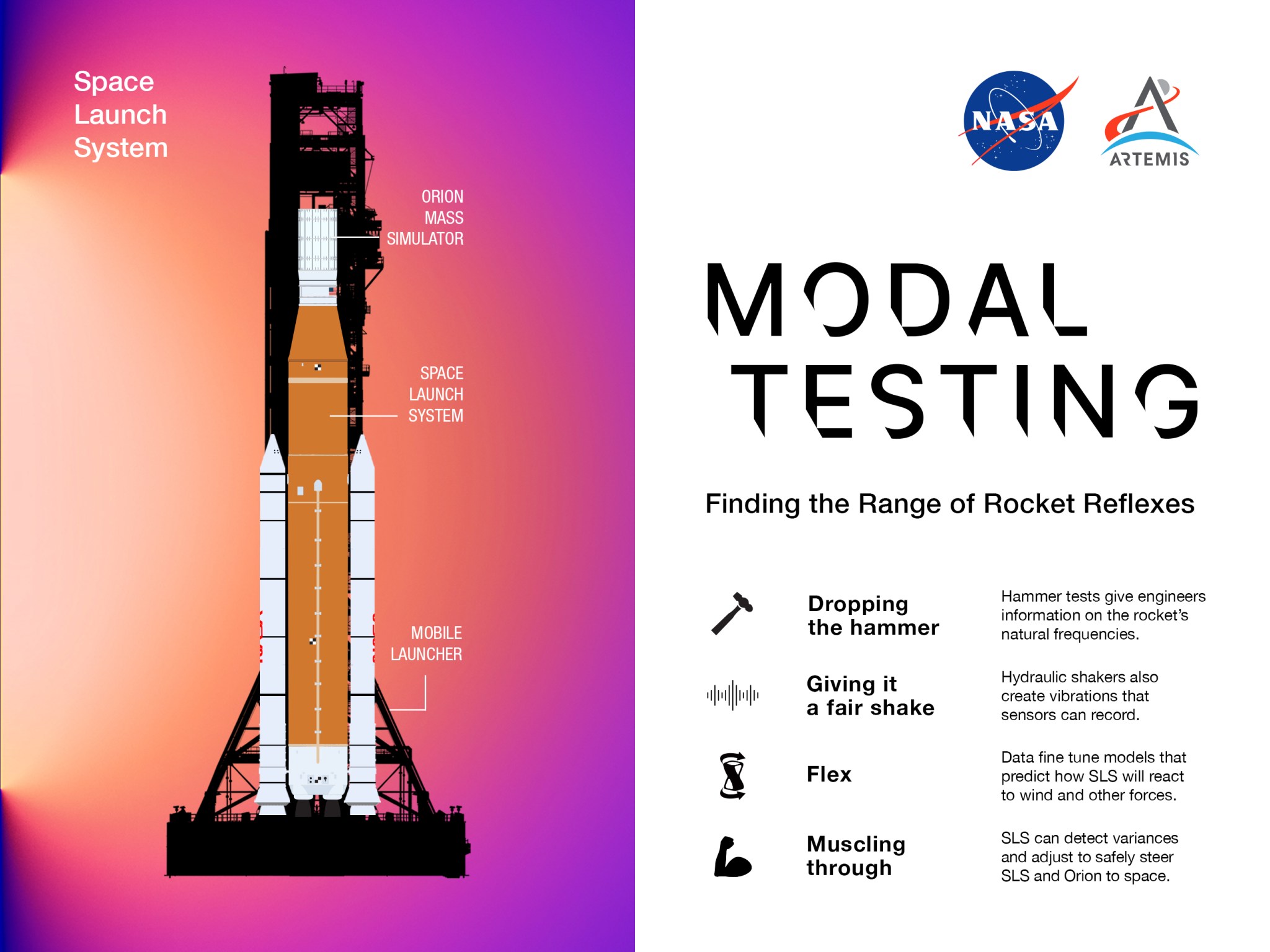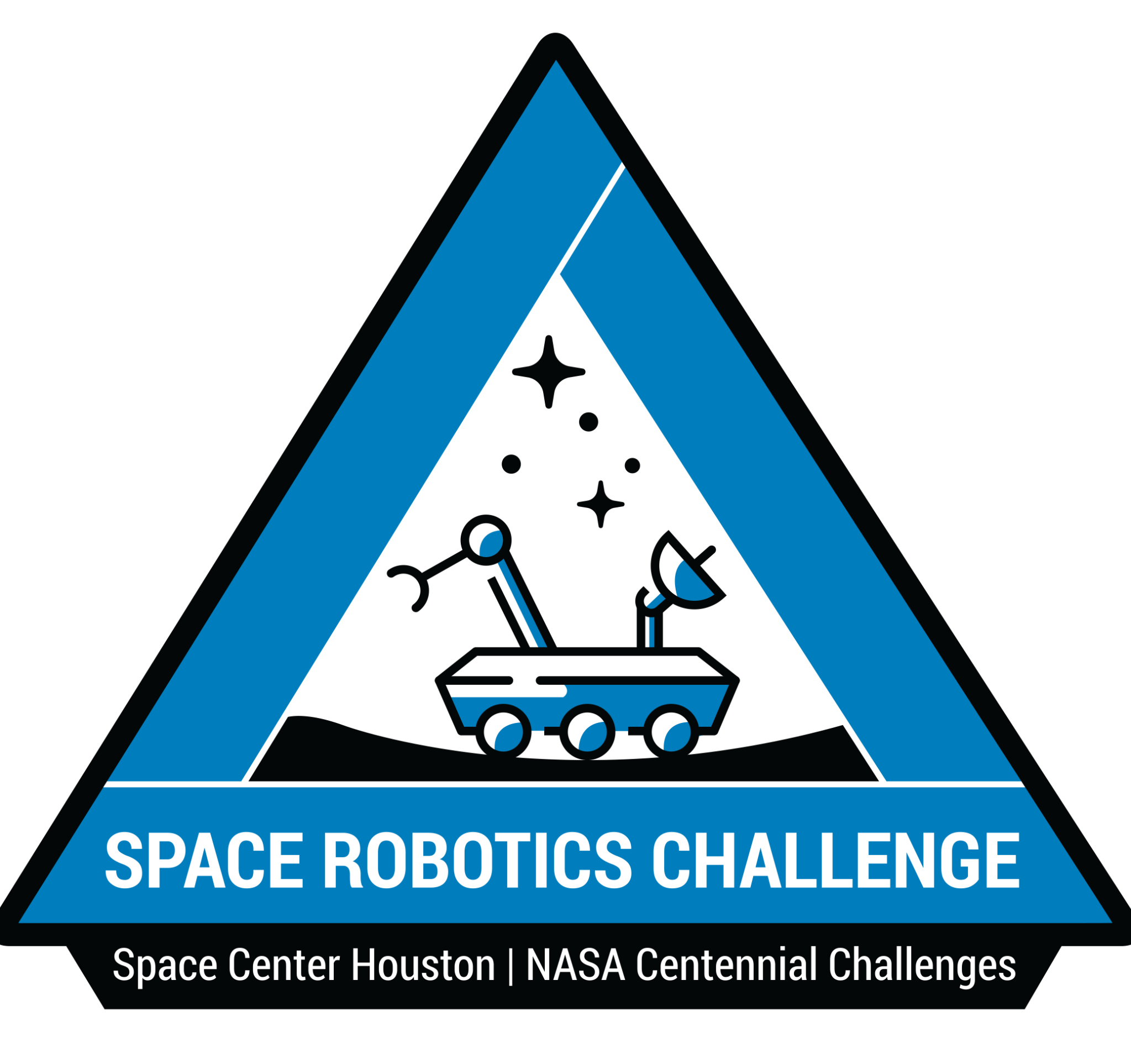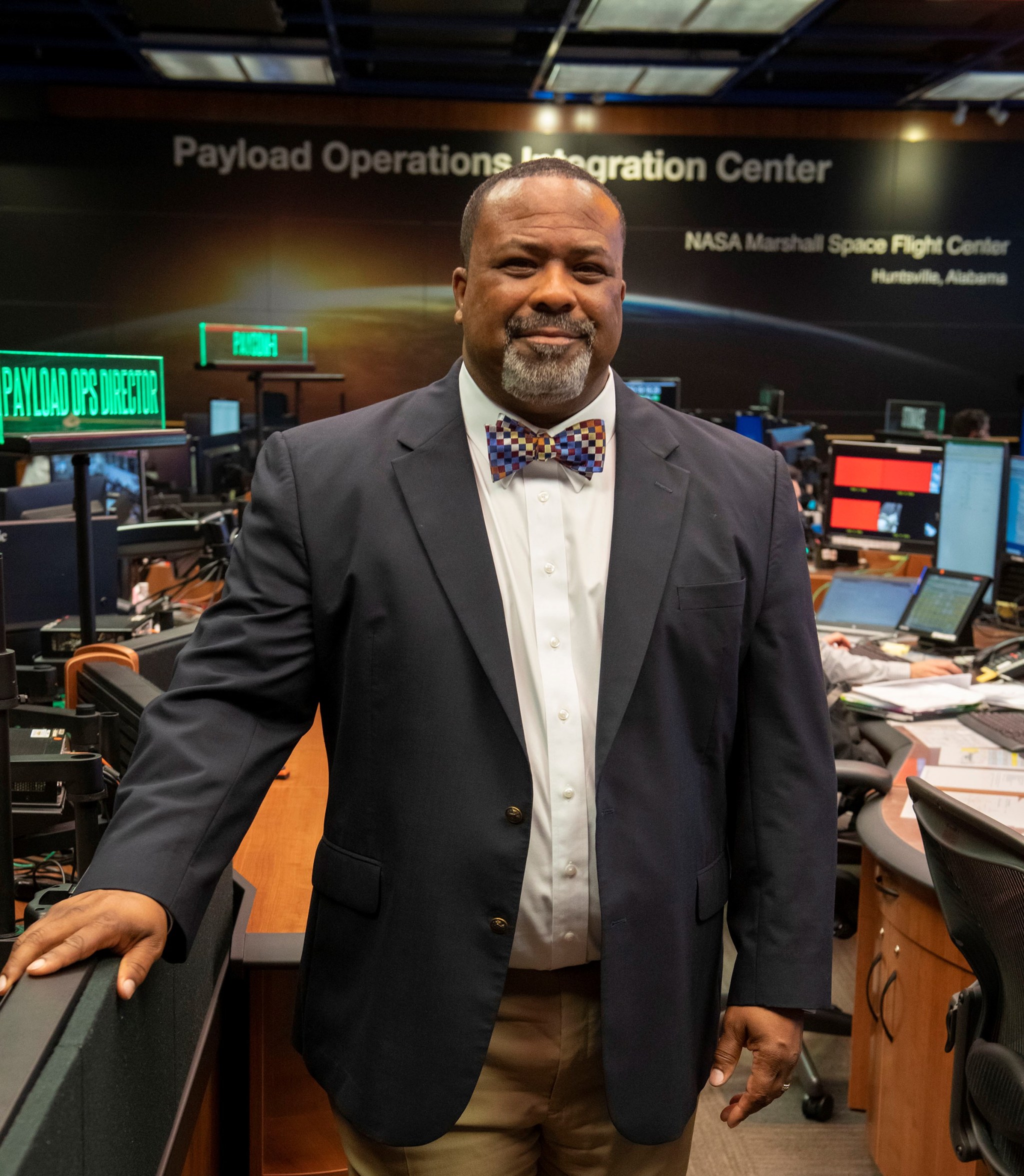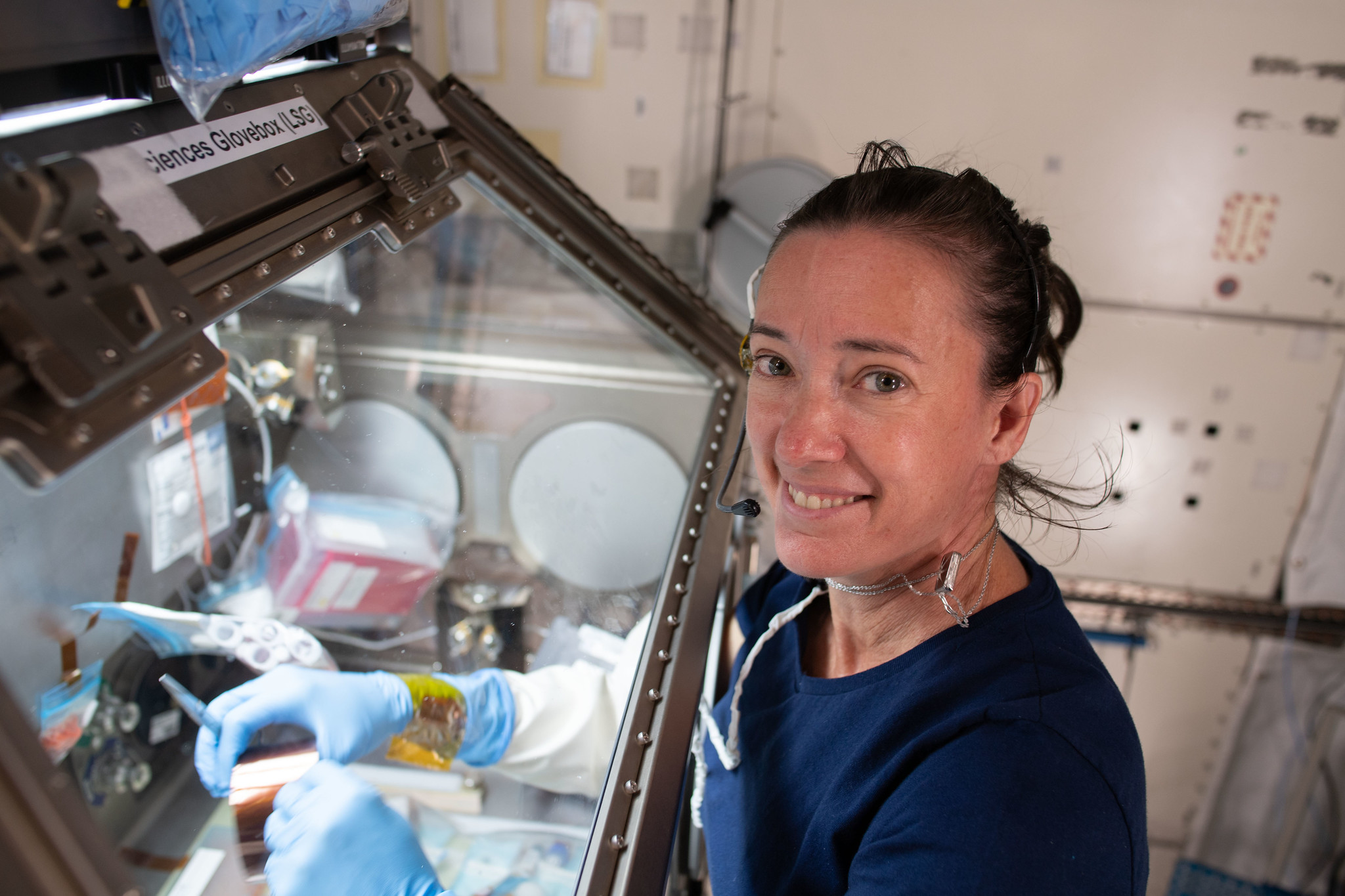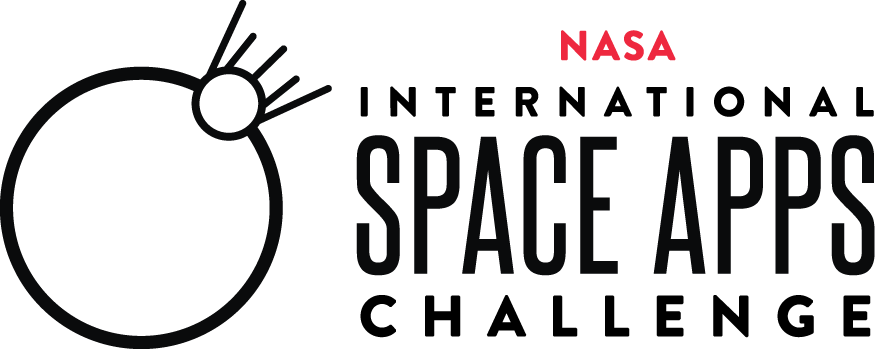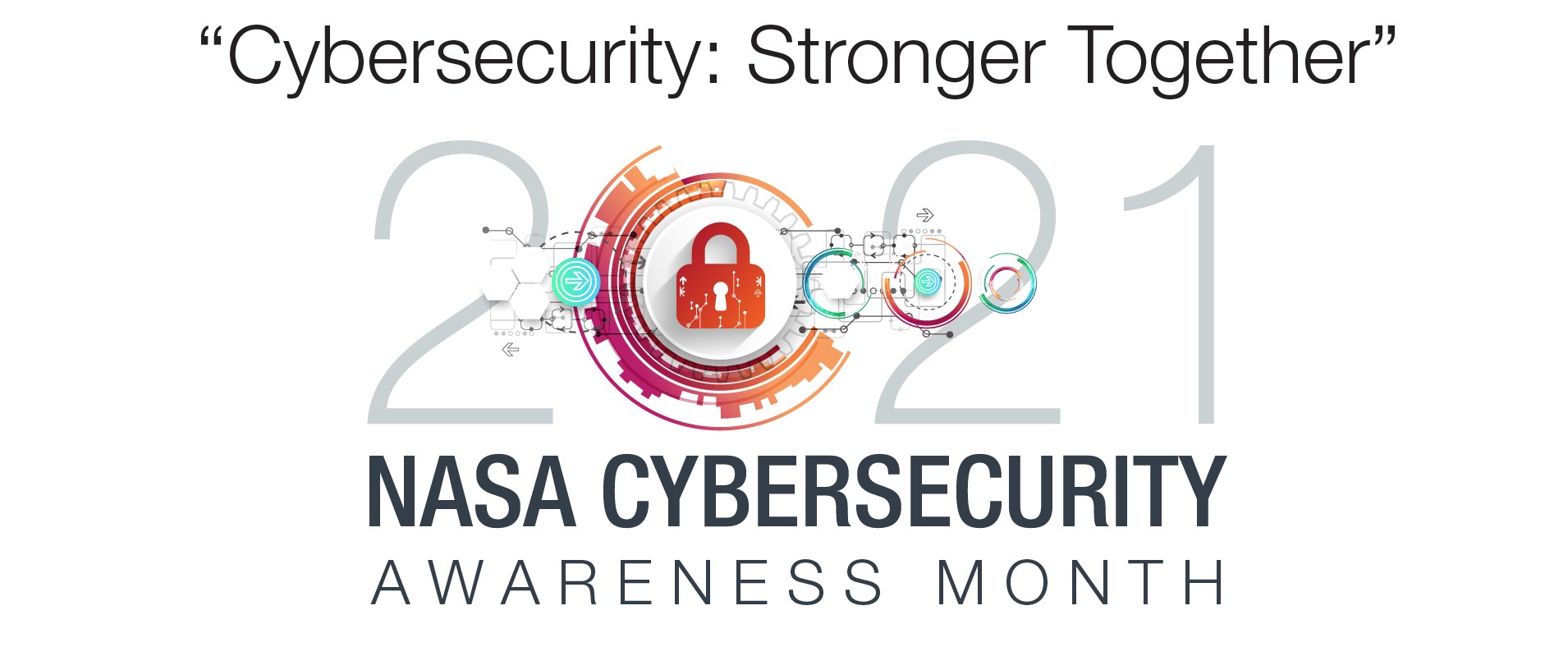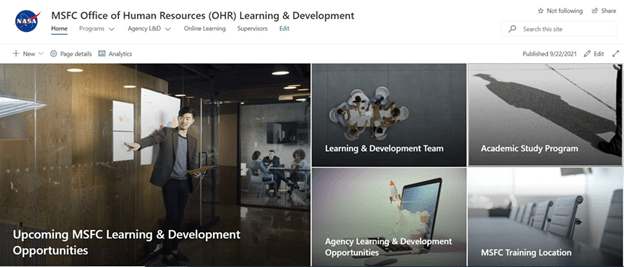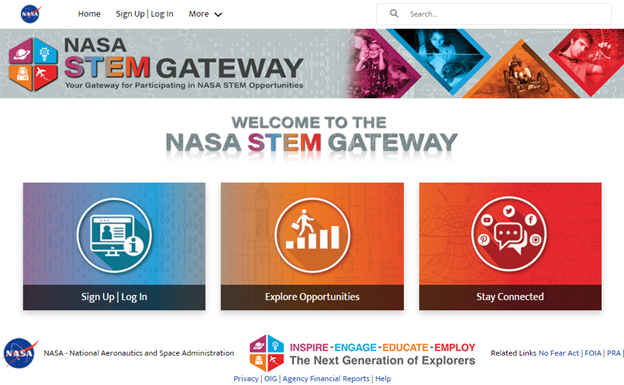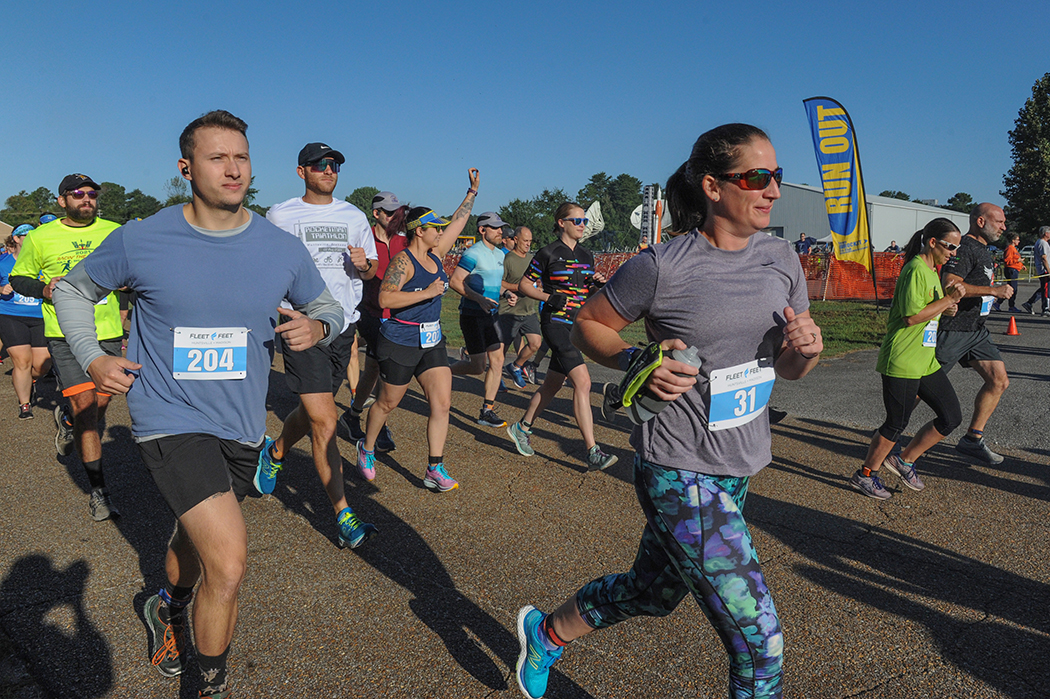Marshall Recognizes 17 Winners in Space Flight Awareness Team Awards
By Tee Quillin
Seventeen teams from NASA’s Marshall Space Flight Center were honored with the agency’s Space Flight Awareness Team Award in a virtual ceremony Sept. 23. The annual award is presented to NASA civil servants and contractors who demonstrate strong work ethic and creative, innovative thinking in support of human spaceflight in the first seven years of their career.
“This is a great way to celebrate our Marshall awardees; true trailblazers on this journey of exploration and discovery,” said Steve Miley, Marshall’s associate director. “These folks have shown they are true problem solvers, innovators, leaders, hard workers, and team players in areas ranging from computing services, television and communications, payload ops for the International Space Station, Human Landing Systems and supporting the Space Launch System rocket.”
The teams and their accomplishments are:
- NASA Green Run Television team, for exemplary teamwork, initiative, flexibility, innovation and perseverance in the planning and delivery of a high-quality NASA Green Run television broadcast given schedule uncertainty. The team’s efforts made it possible to broadly share this critical Artemis mission milestone with the public, key stakeholders, and the workforce.
- Marshall and Agency Computing Services team, for outstanding teamwork and greatly enhancing the security of Marshall’s Data Center infrastructure by securing system configurations to over 90% compliance, therefore greatly reducing the risk to the Marshall Information Technology Services Moderate Infrastructure.
- Human Landing System Program Planning and Control team, for providing significant contribution to the success of the program through the establishment of strategy, risk, control, and reporting processes to enable successful progress through the base period. Through the sustained, superior performance of the team, the program successfully established a risk management system, developed sustaining lander strategies, and managed the program’s budget, risk, and schedule functions.
- Space Launch System Program Baseline Verification team, for exceptional innovation and dedication to ensuring successful as-designed and as-built SLS Artemis I vehicle certification. This team developed and conducted a configuration certification audit activity to supplement the functional configuration audit and to supplement and complete the physical configuration audit of the SLS Artemis I vehicle.
- Space Launch System Strategic Communications team, for their significant contribution, performance, communication, and integration of the communication efforts surrounding the SLS Green Run hot fire. Their leadership and exceptional activities during a pandemic were critical to strategically communicating the success of the test of the core stage of the rocket that is the backbone of the Artemis program. Their efforts led to increased awareness of the progress of the program amongst stakeholders, media, and the general public, all of which are crucial to the continued advancement of the agency’s goal to put the first woman and first person of color on the Moon by 2024.
- Space Launch System Information Technology and Security Support team, for superior information technology and security performance in supporting SLS during center shutdown and mandatory telework due to COVID-19; meeting all safety and security requirements for the SLS program to maintain mission success.
- Launch Vehicle Stage Adapter 2 Welding and Manufacturing team, for sustained superior performance in the delivery of the welded launch vehicle stage adapter 2 flight article. The team worked long and flexible hours under COVID-19 pandemic conditions for over a year to ensure that the Materials and Processes Laboratory delivered the welded flight article on schedule.
- Launch Vehicle Stage Adapter Forward Skirt Knowledge Transfer team, for outstanding coordination between Marshall, Michoud Assembly Facility, and Kennedy Space Center personnel in preparation for Artemis I thermal protection system closeout operations. The team collaborated through outstanding knowledge transfer regarding surface preparation, spray-on foam insulation operations, and hands-on assessments of flight-like operations.
- Core Stage Thrust Vector Control System Test team, for significant contributions in successfully completing SLS core stage thrust vector control system qualification testing at the thrust vector control laboratory. This outstanding, talented, and dedicated team made the system test a possibility through sustained effort, ingenuity, and incredible resolve to work together through challenging circumstances.
- Space Launch System Core Stage Modal Test team, for successful completion of the SLS core stage modal test at Stennis Space Center. The modal test, the first of eight tests in the Green Run series for the SLS core stage, provided data to validate critical models used for the operation of the guidance, navigation, and control systems needed to ensure safe flight of the Artemis I vehicle.
- Spacecraft Payload and Integration Element Artemis I Verification and Validation team, for outstanding accomplishments during fiscal year 2020-2021 in processing the closure of both spacecraft payload and integration element Artemis I, level 2 and level 3 detailed verification objectives.
- Payload Operations Integration Crew Training Coordination team, for exceptional commitment to ensure that assigned space station crewmembers are trained to perform payload operations effectively and safely. The team circumnavigated many obstacles during the COVID-19 timeframe to ensure crew members would continue to be trained with a minimized set of resources.
- Loadshed Enhancement team, for the outstanding dedication to increase the positioning of the Cold Atom Laboratory payload and EXPRESS – EXpedite the PRocessing of Experiments to the Space Station – Racks within the space station power loadshed tables. The teamwork and technical expertise provided on behalf of the cold atom payload/EXPRESS Racks, from multiple organizations, will ensure the safest of operating environments for years to come.
- Payload Operations Integration Center Safety team, for outstanding support to the space station program for the implementation of a process to improve the identification and categorization of payload anomalies, making a safer environment for the crew and vehicle.
- Gateway Internal Payload Accommodations Concept Development team: In recognition of developing the concept and requirements for an innovative Gateway internal payload support system providing necessary resources for multidiscipline research while increasing crew time efficiency, minimizing volume, improving safety, and simplifies sustaining over the life of the vehicle.
- Marshall International Space Station Payload Test team, for significant contribution in responsiveness, management, and implementation of the space station payload testing during Marshall’s COVID-19 operations. The team’s dedication, adaptability, and ingenuity – while maintaining superior performance – enabled mission-essential payload customer delivery for the space station research program.
- Ring-Sheared Drop Parabolic Flight team, for outstanding dedication, teamwork, and perseverance during the COVID-19 pandemic to support the ring-sheared drop parabolic flight, in order to test modifications to space station hardware that could lead to success of the in-orbit experiment.
“Your critical work pays forward to the goals this agency, and our center, are pursuing: Supporting the space station 24/7 and building and testing the world’s most powerful rocket as we prepare for its first launch and the Artemis I mission,” Miley said, “particularly during this past year’s great challenges, but year-round, your support also makes a difference.”
Quillin, a Media Fusion employee, Supports Marshall’s Office of Strategic Analysis & Communications.
Release, Retract Test Marks Artemis I Mission Milestone
Engineers with Exploration Ground Systems and contractor Jacobs successfully completed the Umbilical Release and Retract Test on Sept. 19 inside the Vehicle Assembly Building at NASA’s Kennedy Space Center in preparation for the Artemis I mission.
The umbilicals will provide power, communications, coolant, and fuel to the rocket and the Orion spacecraft while at the launch pad until they disconnect and retract at ignition and liftoff.
“Previous testing at the Launch Equipment Test Facility and in the Vehicle Assembly Building refined our designs and processes and validated the subsystems individually, and for Artemis I, we wanted to prove our new systems would work together to support launch,” said Jerry Daun, Jacobs Arms and Umbilical Systems Operations Manager.
During the test, several umbilical arms extended to connect the Space Launch System rocket and the mobile launcher. They swung away from the rocket, just as they will on launch day.
“This test is important because the next time these ground umbilical systems are used will be the day of the Artemis I launch,” said Scott Cieslak, umbilical operations and testing technical lead.
Teams will continue conducting tests inside the Vehicle Assembly Building before transporting the Orion spacecraft to the assembly building and stacking it atop the SLS, completing assembly of the rocket for the Artemis I mission.
“It was a great team effort to build, and now test, these critical systems,” said Peter Chitko, arms and umbilicals integration manager. “This test marked an important milestone because each umbilical must release from its connection point at T-0 to ensure the rocket and spacecraft can lift off safely.”
Artemis I will be the first integrated test of the SLS and Orion spacecraft. In later Artemis missions, NASA will land the first woman and the first person of color on the surface of the Moon, paving the way for a long-term lunar presence and serving as a steppingstone on the way to Mars.
SLS Modal Testing: Finding the Range of a Rocket’s Reflexes
Before NASA’s Space Launch System launches the Artemis I mission to the Moon, teams inside the Vehicle Assembly Building at NASA’s Kennedy Space Center will conduct a series of tests to determine the deep space rocket’s reflexes. During launch and flight, SLS will experience and react to a series of frequencies and vibrations. Engineers conduct integrated modal testing to determine the full range of these frequencies and vibrations so that the flight software and navigation systems can safely guide the rocket through launch and ascent. To do that, technicians use a test version of the Orion stage adapter and Orion mass simulator to determine the natural frequencies, flexes, and vibration patterns of the SLS rocket. Artemis I stacking will resume with flight versions of the Orion stage adapter and NASA’s Orion spacecraft following completion of the test series. With Artemis, NASA will land the first woman and the first person of color on the lunar surface and establish long-term exploration at the Moon in preparation for human missions to Mars. SLS and Orion, along with the commercial human landing system and the Gateway in orbit around the Moon, are NASA’s backbone for deep space exploration. SLS is the only rocket that can send Orion, astronauts, and supplies to the Moon in a single mission. (NASA)
Teams Develop Code to Coordinate Robots, Win $535,000 in Space Robotics Challenge
By Taylor Goodwin
NASA has awarded a total of $535,000 to seven teams that competed in the agency’s Space Robotics Challenge. The teams developed code to help advance state-of-the-art autonomous robotics for future space exploration missions.
This final round of the challenge opened in January. Each team was led by a U.S. citizen, an eligibility requirement of the competition. Teams coordinated and coded various robotic systems within a virtual, simulated lunar environment. The virtual robots needed to locate, collect, and haul resources to their “home base” on the Moon – all without human interference. A panel of subject matter experts from NASA and industry scored each team based on the number of resources the autonomous bots identified, excavated, and delivered to their targeted base.
The seven winning teams in ranked order of prize package are:
- Olympus Mons, a team of individuals in Barcelona, Spain ($185,000)
- Robotika in Space, a team of individuals in Annapolis, Maryland ($125,000)
- Team Adelaide, a team of students and faculty of the University of Adelaide in Australia ($75,000)
- Walk Softly, a solo competitor in Niskayuna, New York ($50,000)
- Whalers, a team of individuals in Nantucket, Massachusetts ($40,000)
- Team Mountaineers, a team of students and faculty of West Virginia University in Morgantown ($30,000)
- Future Robotics Lab, a team of individuals in Franklin, North Carolina ($30,000)
The winning teams offered different approaches to solving the challenge. Strategies included deploying spiral and zig-zag search patterns, enabling multi-robot communications, taking advantage of sunlight for power, and coordinating robots working nearby.
First-place team Olympus Mons focused on gathering material from the lunar surface while ensuring the integrity of their rovers throughout the operation. They built a squad of six rovers to search the simulated area, excavate, and haul materials. The team’s strategy used a central system to coordinate the efforts of the individual rovers and make high-level decisions. That allowed the rovers to focus on a subset of specific tasks.
Robotika in Space, the second-place team, built two independent trios of robots – each consisting of one scout, one excavator, and one hauler. Each group of robots explored and excavated half of the simulated surface, traveling in semicircle patterns to locate resources. Once the scout located the resources, it signaled the excavator and hauler bots to gather and transport the materials.
Team Adelaide won third place by developing two scouts, two excavators, and two haulers. They separated the six bots into two independent teams. Each team was responsible for processing half of the simulated lunar surface. The scout bots followed a spiral pattern, followed by slower excavator and hauler bots. When the scout detected resources, the excavator and hauler robots would obtain and move the resources.
“Autonomous robotic systems like those developed for this challenge could assist future astronauts during long-duration surface missions, allowing humans to focus on the more meticulous areas of exploration,” said Monsi Roman, program manager for NASA’s Centennial Challenges.
Phase 1 of the challenge, completed in June 2017, focused on NASA’s R5 humanoid robot operating in a virtual Mars environment. It consisted of two challenge rounds and tasked competitors with advancing humanoid robot dexterity so robots could work better alongside, even without, astronauts.
Phase 2 also consisted of two rounds: qualification and final competition. In the qualification round, teams were given three separate in-situ resource utilization tasks to complete in a simulated lunar environment. Out of 114 registered teams, 22 advanced to the finale, where they built upon their software to demonstrate autonomous operations over an ongoing mission.
The Space Robotics Challenge is supported by subject matter experts at NASA’s Johnson Space Center. The competition is a Centennial Challenge and part of the Prizes, Challenges, and Crowdsourcing program within NASA’s Space Technology Mission Directorate. Centennial Challenges, managed at NASA’s Marshall Space Flight Center, bridge the innovation gap between NASA and the nation by stimulating research and technology solutions inside and outside of the traditional aerospace community.
Goodwin, an LSINC employee, supports Marshall’s Office of Strategic Analysis & Communications.
Take 5 with Dwight Mosby
By Janet Anderson and Daniel Boyette
Dr. Dwight Mosby is a big believer in legacy. Mosby, manager of the Payload and Mission Operations Division at NASA’s Marshall Space Flight Center, is keenly focused not only on new technology being put into place, but also the new people in his organization.
“We’ve been intentional about training, teaching, and developing those coming behind us. It’s our first goal,” said Mosby, who is also payload operations cost account manager. “The one piece that I enjoy imparting is that the whole space program for the United States got started here at Marshall. The reason why we’re still here is because we have made sure there is a legacy and that we have trained those coming behind us to continue in the same traditions and the same vein and to lean forward. That’s what we’re asking for from our team. That’s the mindset that we’re putting in place for the newer project leads and managers. We don’t want them to fall into a rut where they’re doing the same old thing day to day. Don’t be scared to think bold and do big things.”
Mosby was a military brat. His father, Dwight Mosby Sr., served in the Army and conducted three tours in Germany over the 1970s and 1980s. The younger Mosby grew up with a love for all things military, including planes. He wanted to be a pilot but was thwarted by bad eyesight. He earned a scholarship to Clark Atlanta University through the Office of Naval Research to study physics. His research was run by NASA’s Langley Research Center and focused on photovoltaic, or solar, arrays.
“Doing that research helped me get my job with Johnson Space Center, and the rest was history,” he said.
Question: How do you encourage teamwork, collaboration, and integration, especially in this unprecedented telework environment?
Mosby: One of the things our entire management team does is to intentionally schedule meetings to coordinate and integrate across the teams. I frequently say the hardest part of our jobs is making sure everyone is communicating. With our division supporting multiple projects, having a management team that’s in sync and regularly communicates helps us come to resolutions quickly. When the agency provided Microsoft Teams as a virtual meeting platform, it was a game-changer for us, especially in our environment where our flight controllers rely on team interaction and team training. Our new controllers in training need one-on-one instruction, and many of the teams have hosted virtual meet and greets along with virtual team-building activities, which has helped set the tone for encouraging camaraderie and relationships with those who are new to the program.
Question: How are you managing your personal and your team’s work-life balance, especially now, more than a year into the COVID-19 pandemic?
Mosby: This past school year was tough for me personally with having two seventh graders at home in virtual school. Having to work full-time from home and then making sure they were focused and engaged didn’t leave much time for anything else, but it was nice to take time out for lunch with them every day, and taking a break for their physical education activities also broke up the monotony. Knowing what I was going through gave me a different perspective on making sure my team puts their health first and an understanding to be respectful of people’s time. We’ve been intentional about adhering to “Quiet Fridays” and monitoring leave balances and workload. Now that my kids are physically back in school, I’m trying to maintain that same mindset and take periodic breaks or timeouts from work to recharge but it’s been hard to not fall back into the routine of working nonstop.
Question: What key partnerships are your team pursuing to help NASA build and develop a sustainable presence on the Moon? Help push the boundaries of science, technology, and/or human exploration?
Mosby: One of the goals of the Payload and Mission Operations Division is to expand our business case and preserve the ops capability that Marshall provides to hundreds of principle investigators and payload developers. Part of that is not only external engagement but to work across our center with other organizations that need operations capabilities, including ground data services. We want to be your connection to space! This past year, we’ve had more engagement than ever with the Science and Technology Office, and we’ve recently partnered with Langley Research Center on a new project to automate one of our ground support functions that will help set the stage for future projects. I think the most important step we’ve taken to pursue partnerships is the formulation of our strategic working group within the Payload and Mission Operations Division. The group has helped identify capability gaps, vet ideas for what’s next, and responded to opportunity calls.
Question: How does your team honor and demonstrate NASA’s commitment to creating a diverse and inclusive environment?
Mosby: Creating a diverse and inclusive environment involves everyone doing their part to create a culture where people feel empowered to express their thoughts and opinions as they relate to the organization supporting the mission. That example and expectation starts with the organization’s leadership and practices. It’s not just about recruiting diverse talent; it also involves utilizing that talent to advance the team. In the Payload and Mission Operations Division, we practice inclusion by asking for thoughts during our discussions and technical meetings; as part of that, I frequently call on individuals to get their perspective, which works well in this virtual environment. Another tactic that the management team uses is implementing regular one-on-one meetings with their workers. When we are looking at strategic initiatives, we work with the team leads and projects to flatten lines of communication and to get their buy-in and ideas to build a tactical plan.
Question: Why do you think your team is successful at staying mission-focused?
Mosby: I strongly believe it’s because we understand there’s the potential for loss of life and investment. Every team member on our program understands that our focus is crew safety, vehicle safety, and mission success. We help the crew aboard the International Space Station focus on their tasks because the ground teams have prepared and are focused on making operations successful. Loss of science means we haven’t met all of our mission objectives and we understand the tremendous amount of time and money that teams have invested getting their scientific data and it all culminates with our team enabling the experiments and return of the science.
Anderson is a public affairs officer in Marshall’s Office of Strategic Analysis & Communications. Boyette, an LSINC employee and the Marshall Star editor, supports the Office of Strategic Analysis & Communications.
Space Station Crew Studies How Space Affects Skin
NASA astronaut and Expedition 65 Flight Engineer Megan McArthur services donor cells inside the Kibo laboratory module’s Life Science Glovebox for the Celestial Immunity study May 6 aboard the International Space Station. The Life Science Glovebox was used Sept. 21 for a biology study exploring how long-term microgravity affects skin and the healing process. McArthur and fellow Flight Engineer Shane Kimbrough continued the Rodent Research-1 Demonstration, a space biology study that seeks to identify genes and observe cell functions that are impacted by weightlessness and affect skin processes. The rodents will be returned to Earth this week on the Cargo Dragon vehicle for further examination. “For Rodent Research-1 Demonstration, the Life Sciences Glovebox will be utilized to observe rodents and contain biological material that could be harmful to both the astronauts and the space station,” said Chris Butler, Microgravity Life Sciences Glovebox Facility Payload Integration manager at NASA’s Marshall Space Flight Center. “The engineering integration of all payloads into the Life Sciences Glovebox is managed here at Marshall.” (NASA)
Space Apps Challenge marks 10th Global Annual Hackathon
By Wayne Smith
Are you up for the challenge?
It’s time for the 10th annual NASA International Space Apps Challenge, a global hackathon and challenge that encourages participants to use the agency’s open data to solve real-world problems on Earth and in space.
This year’s all-virtual event is Oct. 2-3 and carries the theme, “The Power of Ten.” NASA is commemorating 10 years of collaboration and problem-solving with a power team of 10 international space agencies that will work together to make Space Apps accessible to more communities worldwide.
The Power of Ten theme is also conveyed through four new and more inclusive award categories, creating a total of 10 global awards. Once travel is deemed safe, winning teams will receive an invitation to the Winners Trip, which could potentially include viewing a spacecraft launch at a NASA facility.
“The Space Apps Challenge is important because it inspires collaboration, creativity, and critical thinking to problem-solvers across the world, allowing them to come up with solutions to real problems using NASA’s free and open data,” said Sandra Cauffman, deputy director of NASA’s Earth Science Division.
Alabama A&M University in Huntsville will serve as regional host for the 2021 challenge in coordination with NASA’s Marshall Space Flight Center.
More than 2,300 projects were submitted during last year’s challenge, spanning 3,831 teams and nearly 150 countries and territories.
“The 2020 NASA Space Apps Challenge was Alabama A&M’s first chance to serve as the host, where we gave out over $5,000 in cash prizes and over $1,000 in tech gadgets as door prizes and rewards,” said Ed Pearson, organizing committee chair at Alabama A&M. “Again, we are excited to serve as this year’s host and hope to surpass our prize giveaways from last year.”
The Space Apps Challenge is an international hackathon and challenge for coders, scientists, designers, storytellers, makers, builders, technologists, and others in cities around the world, where teams engage NASA’s free and open data to explore solutions to problems on Earth, the Moon, and beyond.
For one weekend each October, participants from around the world come together over a 48-hour period to solve challenges submitted by NASA personnel. Once the challenge ends, space agency experts judge project submissions and select award winners.
Using NASA data to solve each year’s challenges, Space Apps teams learn about the missions and research of NASA and the 2021 Space Apps partners. For this special 10th year, partner space agencies have also submitted open data that participants can incorporate into their solutions.
Space Apps inspires collaboration, creativity, and critical thinking. NASA’s goal with the challenge is to leverage this interest to encourage the growth and diversity of the next generation of scientists, engineers, and explorers.
The virtual challenge launches 9 a.m. Oct. 2 and closes 11:59 p.m. Oct. 3. Registration for the Huntsville event is still open.
From protecting natural resources on Earth to designing hardware or a game about human spaceflight to Mars, the challenges offer something for everyone.
This year, Space Apps is offering a record 28 challenges for participants. Last year, more than 26,000 people from 148 countries took part in 23 challenges.
Categories for challenge awards this year include:
- Best Use of Science – The solution that makes the best and most valid use of science and/or the scientific method.
- Best Use of Data – The solution that best makes space data accessible or leverages it to a unique application.
- Best Use of Technology – The solution that exemplifies the most innovative use of technology.
- Galactic Impact – The solution with the most potential to improve life on Earth or in the universe.
- Best Mission Concept – The solution with the most plausible concept and design.
- Most Inspirational – The solution that captures our hearts.
- Best Storytelling Award – The solution that most creatively communicates the potential of open data through the art of storytelling.
- Global Connection Award – The solution that best connects people around the world through technology.
- Art & Technology Award – The solution that most effectively combines technical and creative skills.
- Local Impact Award – The solution that demonstrates the greatest potential for local impact.
Marshall engineer Dan O’Neil is a frequent contributor to the challenges and submitted three this year. He will serve as a subject matter expert for the seventh year.
O’Neil’s challenges include:
- Ontologies and Interactive Network Visualizations, which seeks the best future use of thousands of NASA datasets and show their relationships.
- Planetary Lander Video Game, a task challenging participants to create a game or 3D model simulating a landing on the Moon or Mars.
- Virtual Planetary Exploration V2.0, which strives to create interactive 3D models of equipment future space explorers might use.
“Space Apps provides me with an opportunity to share my experience by identifying resources, brainstorming with teams about technical solutions, and advising teams about how to produce a professional looking project page,” O’Neil said. “I’m enthused by the creativity of the teams that participate in the challenges I support.
“Products from these challenges will serve as examples for new ways to solve problems and presenting solutions that I’ll show to colleagues and management. I wish the best of luck to all the participants.”
Marshall employee Fredrick Michael submitted the GUI for materials science challenge, which focuses on the area of computational materials science predictive modeling.
“Computational predictive materials science and discovery is progressing by leaps and bounds,” Michael said. “What used to take a decade or more we can now do in a year or two. Drawing on worldwide talent … will only accelerate this process to the benefit of human exploration throughout the solar system.”
Marshall’s Andrew Denio started as a Space Apps participant and now regularly contributes to Space Apps as a subject matter expert. He submitted the Near Space Near You challenge this year.
Several other Marshall representatives will support challenges, serve as subject matter experts, or assist with judging.
Smith, a Media Fusion employee, supports Marshall’s Office of Strategic Analysis & Communications.
Marshall to Take Lead in Cybersecurity Awareness Month Events
By Tee Quillin
October is National Cybersecurity Awareness Month and NASA is once again encouraging all team members to participate in the various planned activities designed to increase cyber awareness.
“During October, cybersecurity teams from across the agency will come together to present a comprehensive enterprise Cybersecurity Awareness Program with weekly topics to emphasize protecting NASA’s assets, improving our security processes, and creating a stronger knowledge-based community,” said Judy Darwin, business specialist in the Office of Cybersecurity Services at NASA’s Marshall Space Flight Center.
This year marks the first time that Marshall has coordinated these activities on this scale. In the past, each center conducted its own awareness program and was responsible for securing speakers, developing branding materials, and promotion through center websites and email distribution. This year, all those elements are being organized at Marshall. Darwin and her team have created a Cybersecurity Awareness Month Teams channel , and she encourages all team members to subscribe. “All the meetings/events have been created; you simply add them to your Outlook calendar and join us,” Darwin said. “That was how we determined the theme for this year, ‘Cybersecurity – Stronger Together.’ When we come together as a team, NASA’s interest is better protected.”
Marshall gets things rolling Oct. 5 with the virtual 2021 NASA Cybersecurity Awareness Month Kickoff, on Teams. Throughout the month, the virtual events will continue with talks, digital weekly topics, and even a crossword puzzle game.
A full schedule of the events can be found on the Cybersecurity Awareness Month channel or on the IT Security Awareness and Training Center SharePoint site.
The ongoing COVID-19 pandemic means that a majority of the NASA workforce is teleworking, leading to specific security concerns. “The biggest concern we have is that 80% of our end user devices are now away from the NASA facilities and therefore running on non-NASA managed networks,” said Walter Franklin, Marshall’s chief information security officer. “It is extremely important that our users make it a practice to connect their computers to the NASA virtual private network at all times, except when explicitly told to disconnect. When you’re on the VPN, your computer is remotely attached to the NASA network along with all the cyber protections you would have if you were on-site.” The number of email phishing attacks have increased due to this known potential vulnerability, Franklin said, and while the agency has tightened security to meet most of them, it is still important for every user to be aware.
The most important thing that end users can do to help with cybersecurity is being mindful not to connect personal storage devices to any government-issued computers. “During the COVID era, we’ve worked a large number of incidents caused by users plugging in non-NASA storage devices; these devices sometimes contain malicious code that the antivirus software detects most of the time before major harm can occur,” Franklin said. “I want to use this opportunity to thank the Marshall user community for doing their part in protecting NASA’s data and NASA’s IT environment.”
Quillin, a Media Fusion employee, Supports Marshall’s Office of Strategic Analysis & Communications.
Two Marshall Offices to Get Website Overhauls
By Tee Quillin
The websites for Learning & Development and Office of STEM Engagement at NASA’s Marshall Space Flight Center will soon look quite different. Both offices concluded major overhauls to their web presence and are excited to share those changes broadly.
The Office of Human Resources’ Learning & Development website, which goes live Oct. 1, will see new changes. According to Ken Smiley, human resources specialist in Marshall’s Talent Management Office, users can expect a vibrant, easy-to-navigate community space for current offerings and upcoming learning and development events at Marshall and throughout the agency, with clear and concise descriptions of each training program.
These changes came as a result of discussions aimed to improve the training of Marshall employees. “The Talent Management Office needed to simplify the method by which Marshall employees found opportunities for developing their knowledge and skills,” said Smiley, but an initial transfer to SharePoint “did not align with the new offerings at the center level and neglected links to the new incorporated programs at the agency level.” Improvements were required to help employees understand what was available to them and how to find all the learning and development opportunities.
Smiley said that all Marshall employees will benefit from easier access to information; it will increase their awareness of new and upcoming learning and development opportunities, and it will provide overall support for career and professional development. Importantly, the new design will provide a central location for all learning and development information, including registrations and nominations access.
Discussions regarding upgrading the website have been ongoing, but the current COVID-19 teleworking environment prompted the development to move forward with a higher priority.
Users can also find the new page by going to Marshall’s Office of Human Resources website and clicking on the “Learning & Development” link found under the “HR Services” pulldown menu.
While the Learning & Development website changes will be exclusively for the benefit of NASA civil servants and contractors, STEM Engagement’s changes will benefit both team members and the public. On Oct. 1, they will roll out a complete overhaul to their STEM Gateway website where members of the public can sign up for various agencywide science, technology, engineering, and mathematics engagement opportunities.
“Up until now, registration for these various events have been isolated and specific to each individual event,” said Douglas Goforth, deputy manager of the Office of STEM Engagement Educational Tools and Platforms. “If a person wanted to sign up for multiple events, they would have to enter the same basic personal information with each registration. Thus, STEM Gateway was born.”
Using a Salesforce-based system pilot tested with their internship programs over the last few years, a STEM Engagement team created the gateway, which brings all registrations for their events under one shared user profile – making for a more streamlined registration process for end users. “Each event might have specific, specialized information that they need to collect from the users, but that data will then be merged into each user’s profile for use with that particular registration only. They won’t have to reenter their basic information,” Goforth said.
There is also a benefit to Marshall team members on the backside of this implementation. “With the consolidation of this data, it allows them to run reports of event applications filtered by pretty much any metric they want. Before, they were compiling those reports by hand across several offices and centers with no way to know if they were duplicating entries. Now the same reports can be run with just a few clicks and almost no duplication of data,” Goforth added. “This will allow our staff to focus more on content creation and improvement rather than on collating data manually from hundreds of various sources.”
Tammy Brandon, manager of STEM Engagement’s Educational Tools and Platforms, is executive sponsor of the STEM Gateway team.
Quillin, a Media Fusion employee, Supports Marshall’s Office of Strategic Analysis & Communications.
Annual Racin’ the Station Duathlon Held at Marshall
Participants in the Racin’ the Station duathlon compete during one of the race’s two running segments Sept. 25 at NASA’s Marshall Space Flight. About 150 athletes took part in the run/bike/run event that challenges participants to “beat” the International Space Station by finishing the racecourse in less than 91 minutes and 12 seconds – the time it takes the station to orbit Earth. The two running segments are1.95 miles each, and the biking segment is 14.3 miles. Participants could choose to complete the course as an individual or as part of a two-person relay team, passing off the running and cycling legs. There were 14 relay teams registered. Marshall oversees space station hardware development and implementation, and agency personnel at Marshall’s Payload Operations Integration Center monitor experiments continuously. As NASA’s primary space station science command post, the Payload Operations Integration Center coordinates scientific and commercial experiments on the station, synchronizes payload activities of international partners, and directs communications between researchers around the world and their onboard experiments. To help the crew in orbit conduct scientific study, the operations center is staffed 24 hours a day, seven days a week, 365 days a year. (NASA/Emmett Given)
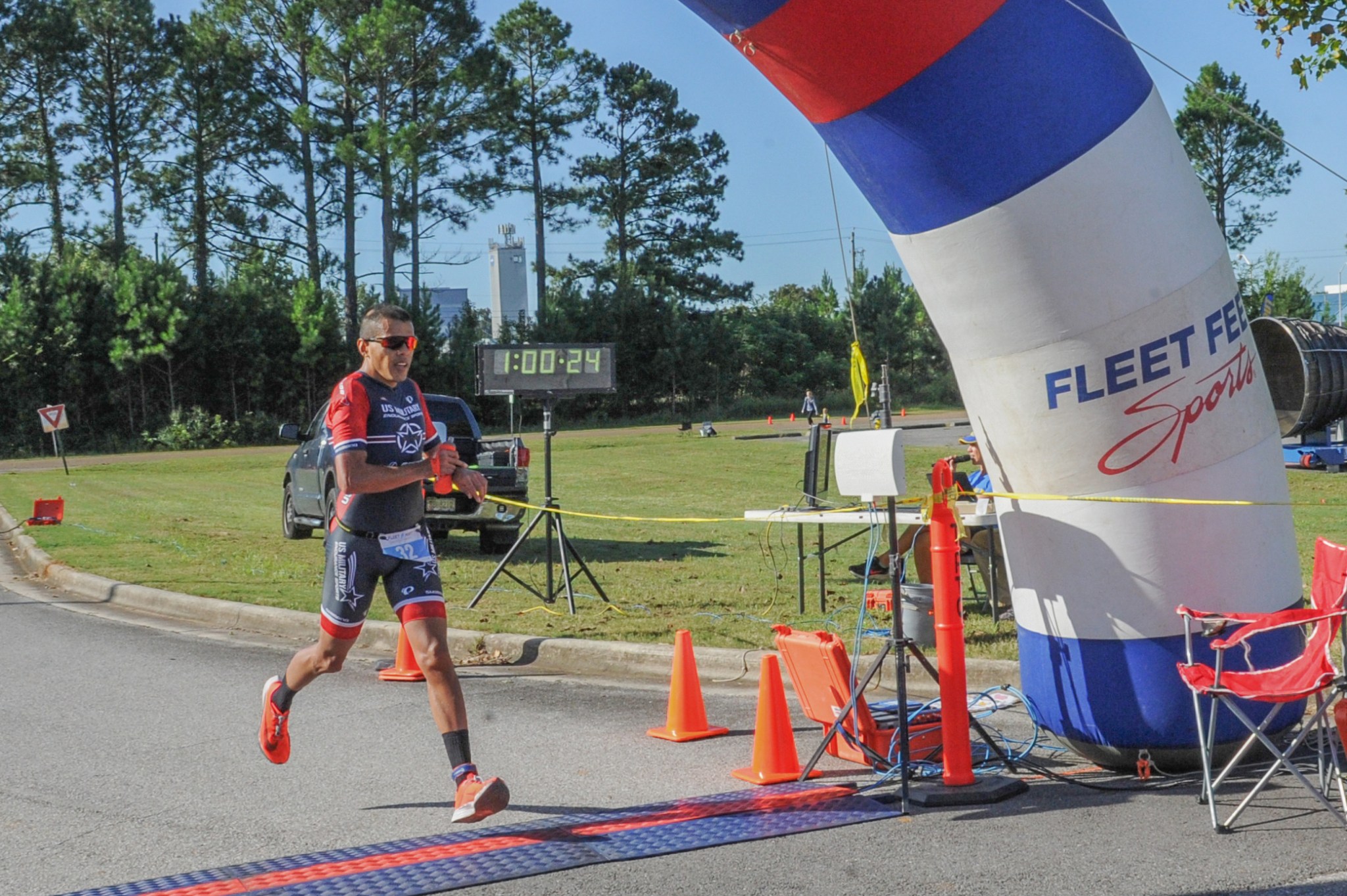
Miguel Contreras of Huntsville crosses the finish line at 1 hour, 23 seconds, to win the 2021 Racin’ the Station duathlon. He held off Huntsville’s Nathaniel Pierce (1:02:43), the 2019, 2018, and 2017 winner. Jon Tate of Nashville placed third at 1:03:02. The top female finisher was Atlanta’s Lisa Hesse (1:11:05). She was followed by Madison’s Amanda Chaloupka (1:16:44) and Hoover’s Lynsey Tibbs (1:16:48). Race proceeds benefit the Marshall Association’s scholarship fund. Last year’s race was not held due to COVID-19. (NASA/Emmett Given)


























